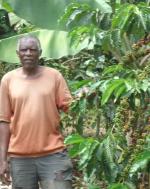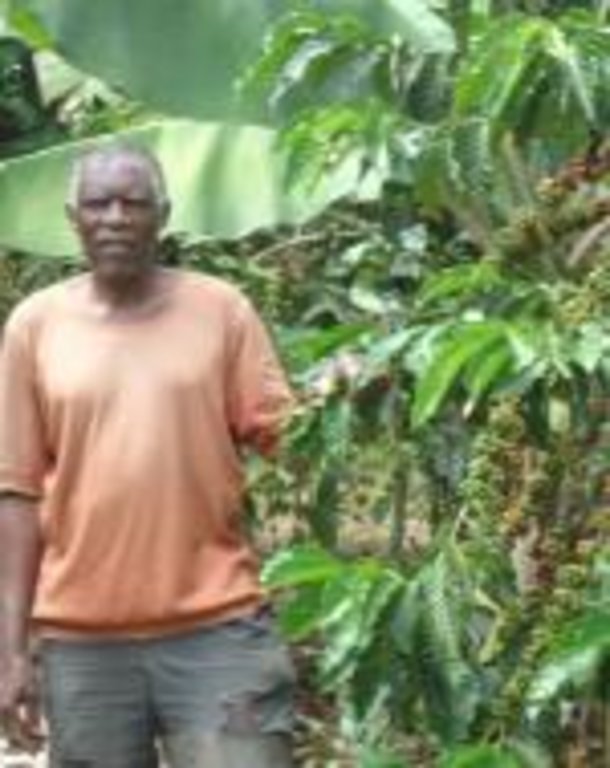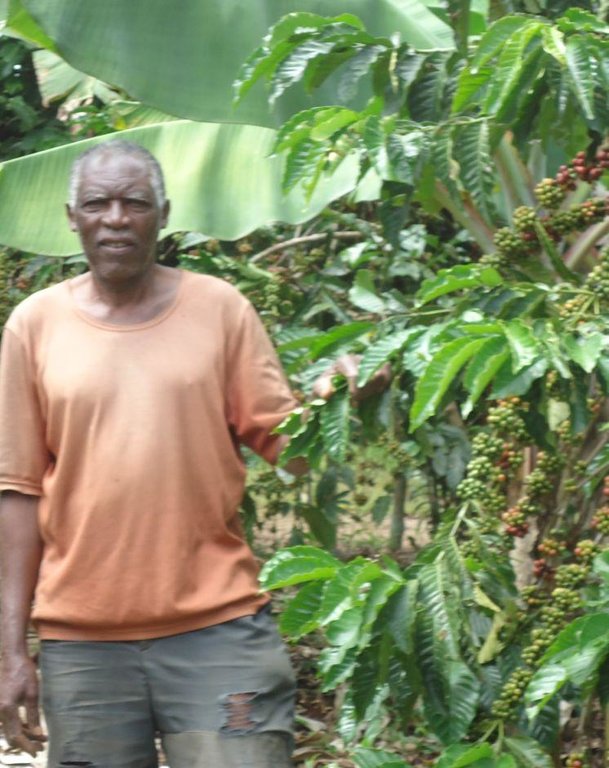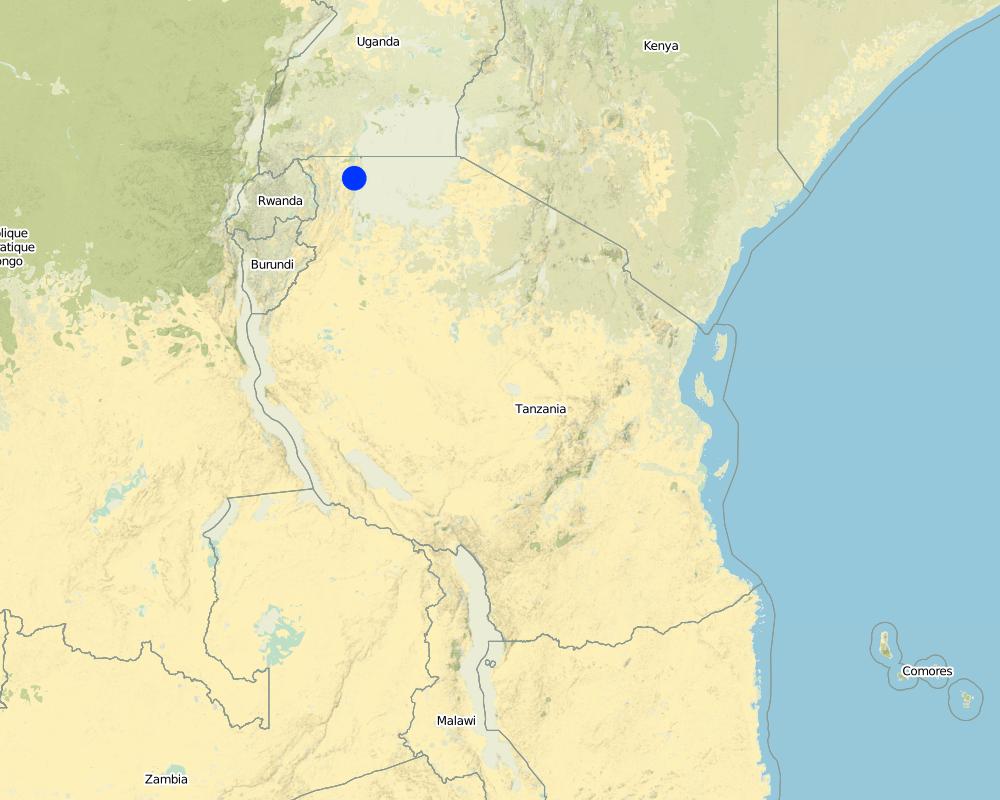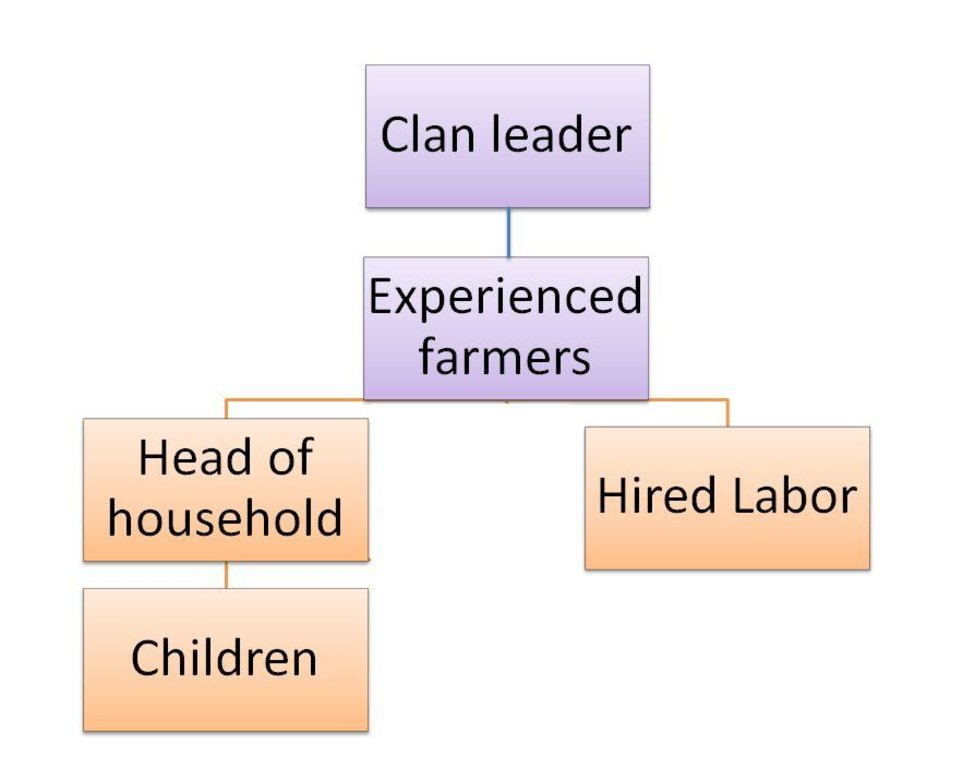Indigenous knowledge transfer [ຕານຊາເນຍ]
- ການສ້າງ:
- ປັບປູງ:
- ຜູ້ສັງລວມຂໍ້ມູນ: Godfrey Baraba
- ບັນນາທິການ: –
- ຜູ້ທົບທວນຄືນ: Fabian Ottiger
Emikolele n'emyegesheleze. (HAYA)
approaches_2472 - ຕານຊາເນຍ
ເບິ່ງພາກສ່ວນ
ຂະຫຍາຍທັງໝົດ ຍຸບທັງໝົດ1. ຂໍ້ມູນທົ່ວໄປ
1.2 ລາຍລະອຽດ ການຕິດຕໍ່ ຂອງບຸກຄົນທີ່ຊັບພະຍາກອນ ແລະ ສະຖາບັນ ການມີສ່ວນຮ່ວມ ໃນການປະເມີນຜົນ ແລະ ເອກະສານ ຂອງວິທີທາງ
ຜູ້ຊ່ຽວຊານ ດ້ານການຄຸ້ມຄອງ ທີ່ດິນແບບຍືນຍົງ:
ຜູ້ຊ່ຽວຊານ ດ້ານການຄຸ້ມຄອງ ທີ່ດິນແບບຍືນຍົງ:
ຜູ້ຊ່ຽວຊານ ດ້ານການຄຸ້ມຄອງ ທີ່ດິນແບບຍືນຍົງ:
Kaihura Fidelis
Kagera TAMP Project, National Project Manager
ຕານຊາເນຍ
ຊື່ຂອງໂຄງການ ທີ່ອໍານວຍຄວາມສະດວກ ໃນການສ້າງເອກກະສານ ຫຼື ປະເມີນດ້ານແນວທາງ (ຖ້າກ່ຽວຂ້ອງ)
The Transboundary Agro-ecosystem Management Project for the Kagera River Basin (GEF-FAO / Kagera TAMP )ຊື່ຂອງ ສະຖາບັນການຈັດຕັ້ງ ທີ່ອໍານວຍຄວາມສະດວກ ໃນການສ້າງເອກກະສານ ຫຼື ປະເມີນແນວທາງ (ຖ້າກ່ຽວຂ້ອງ)
Bukoba district council (Bukoba district council) - ຕານຊາເນຍຊື່ຂອງ ສະຖາບັນການຈັດຕັ້ງ ທີ່ອໍານວຍຄວາມສະດວກ ໃນການສ້າງເອກກະສານ ຫຼື ປະເມີນແນວທາງ (ຖ້າກ່ຽວຂ້ອງ)
FAO Food and Agriculture Organization (FAO Food and Agriculture Organization) - ອີຕາລີ1.3 ເງື່ອນໄຂ ຂອງການນໍາໃຊ້ເອກກະສານຂໍ້ມູນ ຂອງ WOCAT
ເມື່ອໃດທີ່ໄດ້ສັງລວມຂໍ້ມູນ (ຢູ່ພາກສະໜາມ)?
25/05/2012
ຜູ້ສັງລວມ ແລະ ບັນດາຜູ້ຕອບແບບສອບຖາມ ຍອມຮັບໃນເງື່ອນໄຂ ການນໍາໃຊ້ຂໍ້ມູນເອກະສານ ທີ່ສ້າງຂື້ນ ໂດຍຜ່ານ ອົງການ WOCAT:
ແມ່ນ
1.4 ເອກະສານອ້າງອີງ (ຫຼາຍ) ກັບແບບສອບຖາມ (ຫຼາຍ) ເຕັກໂນໂລຢີ ຂອງດ້ານການຄຸ້ມຄອງ ດິນແບບຍືນຍົງ

Enhanced mulching in banana and coffee plantation [ຕານຊາເນຍ]
Application of Thatch and Hyperrhenia Rufa grass mulch in banana and coffee plantation to reduce soil erosion, improve soil fertility and moisture and ensure high productivity
- ຜູ້ສັງລວມຂໍ້ມູນ: Iwona Piechowiak
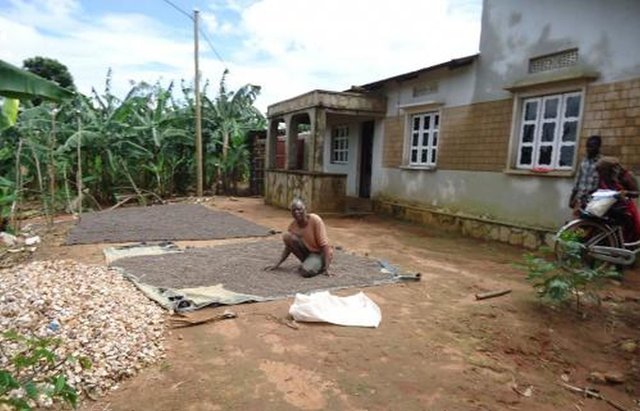
Buhaya agroforestry system [ຕານຊາເນຍ]
Traditional agroforestry system comprising mixture of banana, coffee, fruit trees, biannual crops, annual crops and timber trees which together optimize the use of soil, moisture and space.
- ຜູ້ສັງລວມຂໍ້ມູນ: Godfrey Baraba
2. ພັນລະນາ ແນວທາງການຄຸ້ມຄອງນໍາໃຊ້ດິນແບບຍືນຍົງ
2.1 ການອະທິບາຍ ໂດຍຫຍໍ້ ຂອງວິທີທາງ
Indigenous knowledge transfer, is a common phenomena in farming societies whereby elders taught younger generations the practical aspects in production and emphasizes the norms and proms in folk story tales.
2.2 ການອະທິບາຍ ລາຍລະອຽດ ຂອງວິທີທາງ
ການອະທິບາຍ ລາຍລະອຽດ ຂອງວິທີທາງ:
Aims / objectives: The main aim of this approach is to improve agricultural production through collaboration of households and the entire community. The approach ensures food security and income with land conservation. The approach is achieved by voluntary learning from the experienced elder farmers. This is achieved by creation of friendly environmental to implement the learning process. The approach is also characterized by traditional prons and norms of the young generation to inherit the elders property.
Methods: The elders spent evening hours to tell farming stories to the younger generation. These stories refer to the success of soil fertility improvement, water resources accessibility and utilization, land use type and farming practices in the community.
Also, practical aspect is attained by involving the younger generation in porting and allocating the land according to land use type.
Stages of implementation: 1. Experienced farmers telling farming stories to the younger while younger listen and ask questions.
2. The elders ask old sayings and elaborate their meaning.
3. Elders demonstrating to the younger, how farming activity are done.
4. The younger implement farming activity and plan for their future.
5.The land is allocated to the younger according to land use type.
6. The younger farmers now are in the position to train their successors.
Role of stakeholders: The major stakeholders are Clan leaders, Head of households, mother, children and hired labour. The roles of Clan leaders are to organize the farming story sessions to the elders and reinforce traditional land norms and proms. The roles of Head of household are to conduct evening farming stories at homestead, encouraging the younger to practice farming by giving incentive according to performance. The roles of the children and hired labour is to work in the head of household farms and ensure proms and proms abides.
Other important information: Nowdays, the approach succeeded to expand cropland beyond grasslands and forestland.
2.3 ຮູບພາບຂອງແນວທາງ
2.5 ປະເທດ / ເຂດ / ສະຖານທີ່ບ່ອນທີ່ແນວທາງໄດ້ຖືກນໍາໃຊ້
ປະເທດ:
ຕານຊາເນຍ
ພາກພື້ນ / ລັດ / ແຂວງ:
Tanzania
ຂໍ້ມູນເພີ່ມເຕີມຂອງສະຖານທີ່:
Bukoba District
Map
×2.7 ປະເພດຂອງແນວທາງ
- ພື້ນເມືອງ / ທ້ອງຖີ່ນ
2.8 ເປົ້າໝາຍ / ຈຸດປະສົງຫຼັກ ຂອງການຈັດຕັ້ງປະຕິບັດ ວິທີທາງ
The Approach focused mainly on SLM with other activities (Products diversification, livelihood improvements and land resouces inheretence.)
The main aim of the approach is to improve productivity and ensure younger generations productive land ownership and user rights.
The SLM Approach addressed the following problems: Lack of knowledge and skills of farm technologies, collaboration between households and community, eroded/weakened traditional norms, land ownership inequalities.
2.9 ເງື່ອນໄຂອໍານວຍ ຫຼື ຂັດຂວາງການປະຕິບັດຂອງເຕັກໂນໂລຢີ / ເຕັກໂນໂລຢີການນໍາໃຊ້ຕາມແນວທາງ
ສັງຄົມ / ວັດທະນະທໍາ / ມາດຕະຖານ ແລະ ຄຸນຄ່າທາງສາສະໜາ
- ເຊື່ອງຊ້ອນ
Land ownership inequalities, whereby women and girls are not allowed to inheret the clan land.
Treatment through the SLM Approach: Improve women participation in decision making
ມີຄວາມສາມາດ / ເຂັ້າເຖິງຊັບພະຍາກອນດ້ານການເງິນ ແລະ ການບໍລິການ
- ເຊື່ອງຊ້ອນ
Farming activities regarded as volatile assets by most financial institutions
Treatment through the SLM Approach: Introduce and impliment subsidies policy.
ການກໍ່ຕັ້ງສະຖາບັນ
- ເຊື່ອງຊ້ອນ
The clan leaders not strong in terms of formal training. Weak reinforcement of laws and bylaws.
Treatment through the SLM Approach: Use extension service staffs to promote informal training.
ກ່ຽວກັບກົດໝາຍ (ສິດນໍາໃຊ້ດິນ, ສິດນໍາໃຊ້ນໍ້າ)
- ອໍານວຍ
The existing land ownership, land use rights / water rights moderately helped the approach implementation: Individual land ownership without lease smoothing the transfer of land from one parents to offspring. therefore assured perfect training grounds
- ເຊື່ອງຊ້ອນ
Community not well knowledgeable on land laws.
Treatment through the SLM Approach: Train village land law to the community.
ຄວາມຮູ້ກ່ຽວກັບການຄຸ້ມຄອງ ທີ່ດິນແບບຍືນຍົງ, ການເຂົ້າເຖິງການສະໜັບສະໜູນ ທາງດ້ານວິຊາການ
- ເຊື່ອງຊ້ອນ
Lack of farming technologies transfer.
Treatment through the SLM Approach: Facilitate extension services.
ອື່ນໆ
- ເຊື່ອງຊ້ອນ
Some plant spps habours pests
Treatment through the SLM Approach: Planting of pecit repelant species. eg Kajaye
3. ການມີສ່ວນຮ່ວມ ແລະ ບົດບາດຂອງພາກສ່ວນທີ່ກ່ຽວຂ້ອງທີ່ໄດ້ມີສ່ວນຮ່ວມ
3.1 ຜູ້ມີສ່ວນຮ່ວມ ໃນວິທີທາງ ແລະ ພາລະບົດບາດ ຂອງເຂົາເຈົ້າ
- ຜູ້ນໍາໃຊ້ດິນໃນທ້ອງຖິ່ນ / ຊຸມຊົນທ້ອງຖິ່ນ
Household and hired laborers
Adoption farmers tends to use grups for socilization and participation. The difference between the participation of men and women is that, women train children only, while men can also train hired laborers. Hired labour normally spent the day while folk story conducted at night. Labourers including men and women are disposal to men trainings.Women participate in training at all stages but are not involved in land allocation to the younger generations. Women: Have the rights to produce annual crops and decide on the income from it.
Younger: Are assured of land inheritance from their parents.
laboures: Are paid at the market price.
Poor households: assured food security as work for food, informal land renting i.e paying back the prorate produce.
- ອໍານາດ ການປົກຄອງທ້ອງຖິ່ນ
Provides extension services for up scaling the aproach.
3.2 ການມີສ່ວນຮ່ວມຂອງຜູ້ນໍາໃຊ້ທີ່ດິນໃນທ້ອງຖິ່ນ / ຊຸມຊົນທ້ອງຖິ່ນໃນໄລຍະທີ່ແຕກຕ່າງກັນຂອງແນວທາງ
| ການລວບລວມ ເອົາຜູ້ນໍາໃຊ້ດິນ ໃນທ້ອງຖິ່ນ / ຊຸມຊົນທ້ອງຖິ່ນ | ໃຫ້ລະບຸ ຜູ້ໃດທີ່ມີສ່ວນຮ່ວມ ໃນແຕ່ລະກິດຈະກໍາ? | |
|---|---|---|
| ການເລີ່ມຕົ້ນ / ແຮງຈູງໃຈ | ການນໍາໃໍຊ້ເອງ | Household members. To attend and particiapte in appropriate sessions. |
| ການວາງແຜນ | ການນໍາໃໍຊ້ເອງ | Clan leaders: To identify and select problems and find solutios Head of Household: Children. Siblings: Hired labour: |
| ການປະຕິບັດ | ການນໍາໃໍຊ້ເອງ | Head of the clan: To organise the sittings. Head of Household:To inform the family and conduct the dialogue Children: To participate in farm production, aceptance of allocated land, Using the located land according to land use type. Siblings: To facilitate divison of labour Hired labor: |
| ຕິດຕາມກວດກາ / ການປະເມີນຜົນ | ບໍ່ມີ | Clan head: To call the meeting Community leaders: To visit farms and other land, To observe and deliver the assessments. |
| Research | ການບໍ່ປະຕິບັດ | Few farmers participated in adaptive resarch on Kibanja system 1n 1993. |
3.3 ແຜນວາດ (ຖ້າມີ)
3.4 ການຕັດສິນໃຈກ່ຽວກັບການຄັດເລືອກເຕັກໂນໂລຢີຂອງການຄຸ້ມຄອງທີ່ດິນແບບຍືນຍົງ / ເຕັກໂນໂລຢີ
ລະບຸ ຄົນທີ່ຕັດສິນໃຈ ກ່ຽວກັບການຄັດເລືອກຂອງ ເຕັກໂນໂລຢີ / ເຕັກໂນໂລຢີ ຈະໄດ້ຮັບການປະຕິບັດ:
- ຜູ້ນໍາໃຊ້ທີ່ດິນຫຼັກ, ການສະໜັບສະໜູນ ໂດຍຜູ້ຊ່ຽວຊານ ການນໍາໃຊ້ທີ່ດິນແບບຍືນຍົງ
ອະທິບາຍ:
Indigenous trainings are formalized by extension staffs. Coffee and Vanilla buyers tends to supervise farms for products assurance.
Decisions on the method of implementing the SLM Technology were made by mainly by land users supported by SLM specialists. Extension staffs monitor, evaluate and advise the proper methods up scaling.
4. ການສະໜັບສະໜູນທາງດ້ານວິຊາການ, ການສ້າງຄວາມສາມາດ, ແລະ ການຈັດການຄວາມຮູ້.
4.1 ການສ້າງຄວາມສາມາດ / ການຝຶກອົບຮົມ
ຜູ້ນໍາໃຊ້ທີ່ດິນ ຫຼື ພາກສ່ວນກ່ຽວຂ້ອງອື່ນໆ ໄດ້ຮັບການຝຶກອົບຮົມບໍ່?
ແມ່ນ
4.2 ການບໍລິການໃຫ້ຄໍາປຶກສາ
ເຮັດຜູ້ໃຊ້ທີ່ດິນມີການເຂົ້າເຖິງການບໍລິການໃຫ້ຄໍາປຶກສາ?
ແມ່ນ
ລະບຸວ່າການສະໜອງ ການບໍລິການ ໃຫ້ຄໍາປຶກສາ:
- ໃນພື້ນທີ່ຂອງຜູ້ນໍາໃຊ້ດິນ
ອະທິບາຍ / ຄວາມຄິດເຫັນ:
Name of method used for advisory service: Train and Visit (T&V); Key elements: Subject Matter Specialist trin field staff on fortnight bases. Field staff visit Progressive farmers and train them, Field Staffs visit Farmers to assess the performance and give feed back to Subject Matter Specialist; The method is very effective under a strong economical situation.
Advisory service is inadequate to ensure the continuation of land conservation activities; Farmer field schools can't reach farming communities with extension staffs based on Ward level.
4.3 ສະຖາບັນການສ້າງຄວາມເຂັ້ມແຂງ (ການພັດທະນາອົງການຈັດຕັ້ງ)
ສະຖາບັນ ໄດ້ຮັບການສ້າງຕັ້ງຂື້ນ ຫຼື ໄດ້ຮັບການສ້າງຄວາມເຂັ້ມແຂງ ໂດຍການຈັດຕັ້ງປະຕິບັດ ວິທີທາງບໍ່?
- ມີ, ໜ້ອຍໜຶ່ງ
ລະບຸ ທາງສະຖາບັນ ໄດ້ສ້າງຄວາມເຂັ້ມແຂງ ໃນລະດັບໃດ (ຫຼາຍ):
- ທ້ອງຖິ່ນ
- Agricultural advisory services.
4.4 ຕິດຕາມກວດກາ ແລະ ປະເມີນຜົນ
ການຈັດຕັ້ງປະຕິບັດ ວິທີທາງ ໄດ້ມີການປະເມີນຜົນ ແລະ ຕິດຕາມບໍ?
ແມ່ນ
ຄວາມຄິດເຫັນ:
bio-physical aspects were regular monitored by land users through observations; indicators: activities according to the season.
bio-physical aspects were ad hoc monitored by land users through measurements; indicators: Customary land law, land inheretance protocals.
socio-cultural aspects were regular monitored by land users through observations; indicators: Harvesting season
socio-cultural aspects were ad hoc monitored by other through measurements
economic / production aspects were regular monitored by land users through observations
management of Approach aspects were regular monitored by None through observations
management of Approach aspects were ad hoc monitored by None through measurements
There were few changes in the Approach as a result of monitoring and evaluation: Monitoring and Evaluation component took very minimal attention.
There were no changes in the Technology as a result of monitoring and evaluation
4.5 ການຄົ້ນຄວ້າ
ນີ້້ແມ່ນສ່ວນໜຶ່ງ ການຄົ້ນຄວ້າ ຂອງວິທີທາງບໍ່?
ແມ່ນ
ໃຫ້ຂໍ້ມູນ ເພີ່ມເຕີມ ແລະ ກໍານົດ ຜູ້ໃດເຮັດການຄົ້ນຄວ້າ:
Research was carried out on station
5. ການສະໜັບສະໜູນທາງດ້ານການເງິນ ແລະ ອຸປະກອນຈາກພາຍນອກ
5.1 ງົບປະມານປະຈໍາປີ ສໍາລັບວິທີທາງ ຂອງການຄຸ້ມຄອງ ທີ່ດິນແບບຍືນຍົງ
ຖ້າຫາກບໍ່ຮູ້ຈັດງົບປະມານທີ່ແນ່ນອນ ແມ່ນໃຫ້ປະມານເອົາ:
- < 2,000
ຄໍາເຫັນ (ຕົວຢ່າງ: ແຫຼ່ງຂໍ້ມູນຫຼັກ ຂອງການສະໜອງທຶນ / ຜູ້ໃຫ້ທຶນທີ່ສໍາຄັນ):
Approach costs were met by the following donors: local community / land user(s): 100.0%
5.2 ການສະໜັບສະໜູນ ທາງດ້ານການເງິນ / ອຸປະກອນ ສະໜອງໃຫ້ແກ່ຜູ້ນໍາທີ່ດິນ
ຜູ້ນໍາໃຊ້ດິນ ໄດ້ຮັບການສະໜັບສະໜູນ ທາງດ້ານ ການເງິນ / ອຸປະກອນ ໃນການຈັດຕັ້ງປະຕິບັດ ເຕັກໂນໂລຢີບໍ?
ບໍ່ແມ່ນ
5.3 ເງິນສົມທົບສໍາລັບການນໍາໃຊ້ສະເພາະປັດໃຈຂາເຂົ້າໃນການຜະລີດກະສິກໍາ (ລວມທັງແຮງງານ)
ຖ້າແຮງງານ ຂອງຜູ້ນໍາໃຊ້ດິນ ໄດ້ຮັບການສະໜັບສະໜູນ ປັດໃຈຂາເຂົ້າ, ແມ່ນບໍ່:
- ການອາສາ
ຄວາມຄິດເຫັນ:
Mainly family labour is the major component of input.
5.4 ສິນເຊື່ອ
ໄດ້ປ່ອຍສິນເຊື່ອ ສະໜອງໃຫ້ພາຍໃຕ້ ວິທີການສໍາລັບກິດຈະກໍາ ການຄຸ້ມຄອງ ທີ່ດິນແບບຍືນນຍົງບໍ່?
ບໍ່ແມ່ນ
5.5 ສິ່ງຈູງໃຈ ຫຼື ເຄື່ອງມືອື່ນໆ
ການສົ່ງເສີມ ຈັດຕັ້ງປະຕິບັດ ເຕັກໂນໂລຢີ ໃນການຄຸ້ມຄອງ ດິນແບບຍືນຍົງ ໄດ້ສະໜອງສິ່ງກະຕຸກຊຸກຍູ້ບໍ່?
ແມ່ນ
ຖ້າແມ່ນ, ໃຫ້ລະບຸ:
Agricultural advisory services.
6. ວິເຄາະຜົນກະທົບ ແລະ ສັງລວມບັນຫາ
6.1 ຜົນກະທົບຂອງແນວທາງ
ການຈັດຕັ້ງປະຕິບັດ ວິທີທາງ ສາມາດປັບປຸງ ປະເດັນການຖືຄອງທີ່ດິນ / ສິດທິໃນການນໍາໃຊ້ທີ່ດິນ ທີ່ເຊື່ອງຊ້ອນໃນການຈັດຕັ້ງປະຕິບັດ ເຕັກໂນໂລຢີ ການຄຸ້ມຄອງ ທີ່ດິນແບບຍືນຍົງໄດ້ບໍ?
- ບໍ່
- ມີ, ໜ້ອຍໜຶ່ງ
- ມີ, ພໍສົມຄວນ
- ມີ, ຫຼາຍ
6.2 ແຮງຈູງໃຈຫຼັກຂອງຜູ້ນໍາໃຊ້ທີ່ດິນໃນການປະຕິບັດການຄຸ້ມຄອງທີ່ດິນແບບຍືນຍົງ
- ການຜະລິດເພີ່ມຂຶ້ນ
Diversification asure grand production
- ກໍາໄລເພີ່ມຂຶ້ນ (ຄວາມສາມາດ), ການປັບປຸງຄ່າໃຊ້ຈ່າຍ, ຜົນປະໂຫຍດ, ອັດຕາສ່ວນ
Implementation costs requires on family labour and commitments
- ກົດລະບຽບແລະລະບຽບການ (ລະອຽດ) / ການບັງຄັບໃຊ້
Farming land inheritance protocals and land norms enforcement are ver crucial components.
6.3 ຄວາມຍືນຍົງຂອງກິດຈະກໍາວິທີທາງ
ຜູ້ນໍາໃຊ້ ທີ່ດິນ ສາມາດສືບຕໍ່ ການຈັດຕັ້ງປະຕິບັດ ຜ່ານວິທີທາງໄດ້ບໍ່ (ໂດຍປາດສະຈາກ ການຊ່ວຍເຫຼືອ ຈາກພາກສ່ວນພາຍນອກ)?
- ແມ່ນ
ຖ້າ ໄດ້, ອະທິບາຍເຫດຜົນ:
It has been in application for very long time, and no signs of retardation observed.
6.4 ຈຸດແຂງ / ຂໍ້ດີ ຂອງວິທີທາງ
| ຈຸດແຂງ / ຈຸດດີ / ໂອກາດ ຈາກທັດສະນະຂອງຜູ້ປ້ອນຂໍ້ມູນ ຫຼື ບຸກຄົນສຳຄັນ |
|---|
| Local resource person, obedience and committed community. |
7. ເອກກະສານອ້າງອີງ ແລະ ຂໍ້ມູນການເຊື່ອມໂຍງ
7.1 ວິທີການ / ແຫຼ່ງຂໍ້ມູນ
- ການໄປຢ້ຽມຢາມພາກສະໜາມ, ການສໍາຫຼວດພາກສະໜາມ
- ການສໍາພາດ ຜູ້ນໍາໃຊ້ທີ່ດິນ
7.2 ເອກະສານທົ່ວໄປທີ່ສາມາດໃຊ້ໄດ້
ຫົວຂໍ້, ຜູ້ຂຽນ, ປີ, ISBN:
http://www.fao.org/nr/kagera/en/
ມີຢູ່ໃສ?ມູນຄ່າເທົ່າໃດ?
Kagera TAMP project website
ຂໍ້ມູນການເຊື່ອມຕໍ່ ແລະ ເນື້ອໃນ
ຂະຫຍາຍທັງໝົດ ຍຸບທັງໝົດການເຊື່ອມຕໍ່

Enhanced mulching in banana and coffee plantation [ຕານຊາເນຍ]
Application of Thatch and Hyperrhenia Rufa grass mulch in banana and coffee plantation to reduce soil erosion, improve soil fertility and moisture and ensure high productivity
- ຜູ້ສັງລວມຂໍ້ມູນ: Iwona Piechowiak

Buhaya agroforestry system [ຕານຊາເນຍ]
Traditional agroforestry system comprising mixture of banana, coffee, fruit trees, biannual crops, annual crops and timber trees which together optimize the use of soil, moisture and space.
- ຜູ້ສັງລວມຂໍ້ມູນ: Godfrey Baraba
ເນື້ອໃນ
ບໍ່ມີເນື້ອໃນ


